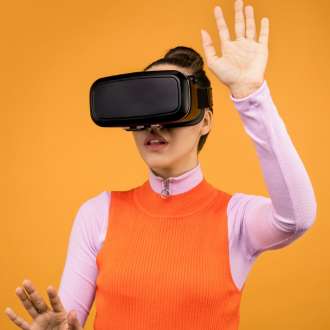

Have you always found shopping tedious simply because it always ends up in you having to try numerous outfits to just end up with no clothes in some instances? The effort, exhaustion and money spent on travelling is just not worth the hassle of that cute outfit.
Since covid swept the world, a new trend came into being - virtual shopping, where it allowed the customer to choose outfits and even try them on from the comfort of their own home. New developments in Augmented Reality Virtual Try-On Technology have made this an actuality and several fashion moguls in the industry have already started experimenting such as e.l.f Cosmetics, L’Oreal, Farfetch, Wacoal, Baume & Mercier and Warby Parker to name a few. Amazon has even extended it to shoes.
While every industry may not benefit from it for you cannot virtually smell perfumes , it is revolutionizing the apparel industry. Essentially people go through two stages when shopping
Now, virtual try-on has certainly changed the landscape of e-commerce forever as it overcomes these two issues.
Advantages of Virtual Try On
Let’s face it, shopping physically has its own challenges. How many times have we tried on outfits and bought them only to be disappointed by them later on. According to Forbes, 70% of customers cannot buy things successfully because the size and colour does not fit them hence businesses lose over $550 billion due to clients return purchased goods. 3D virtual try on technology prevents these losses and ensures customers get what they want.
The virtual try on app creates an exact copy of the customers’ bodies down to the last measurement and imperfection. It does not generate a perfect avatar. Customers are able to see just how the outfit would sit on them in real life.
Physical shopping can take several hours but virtual dressing rooms take less time and allows for customers to buy more items in less time.
Trying on clothes can make you feel sweaty, dishevel your hair, massacre your makeup, crumple the clothes you are wearing and essentially make you look like you have just stepped out of a tornado. Further if you hate dealing with sales assistants this is perfect.
Since you can do this from the comfort of your home it allows people with illnesses, disabilities and phobias to also buy clothes.
Since this is all done online the sites can adjust based on cookies and personal preferences and cater better to the likes and dislikes of the customers.
Disadvantages of Virtual Try On
According to studies and surveys more than 82% of shoppers like to touch and feel the fabric and physically see it on their body. Even with online shopping there is that hinge of doubt as to whether it would fit the way you imagined it to be and no matter the newest technology that hinge of doubt is still there. There cannot be a guarantee that the clothing item is without defects either.
Further although Virtual Try On takes into consideration imperfections it may not be able to properly recreate it.
While there is already a hint of doubt in virtual shopping there will be instances that the technology may fail as it is quite challenging to maintain, leading a customer to experience a bad purchase. That may deter the customer from virtual try-ons even though it might have been a one-time occurrence.
Currently the technology is developing and is not in common usage. Hence it is not used in large scale. Therefore, acquiring the technology can be a hassle.
#virtualtryon #fitonwithnohassle #newtech #virtualfashion #augmentedreality







